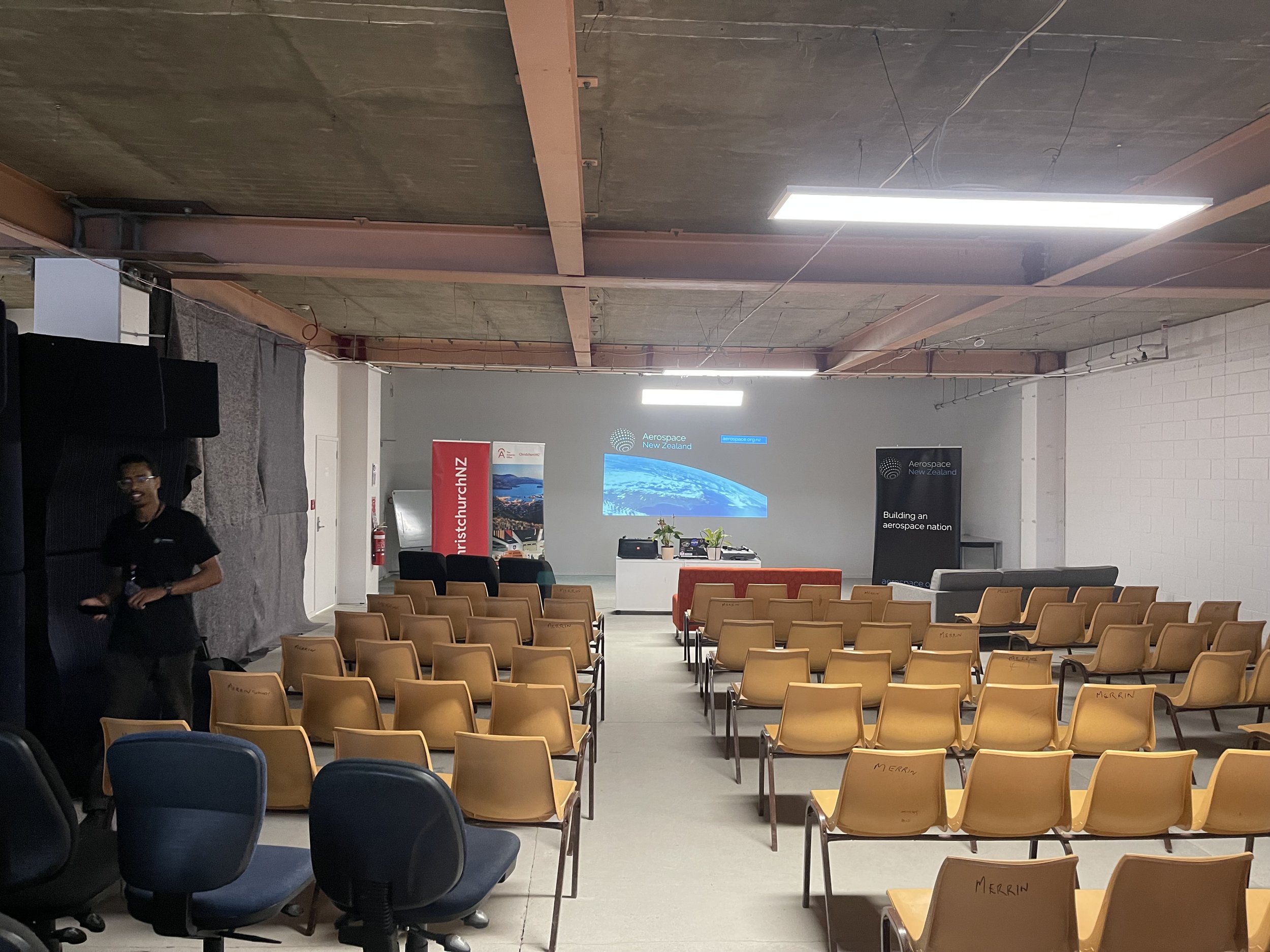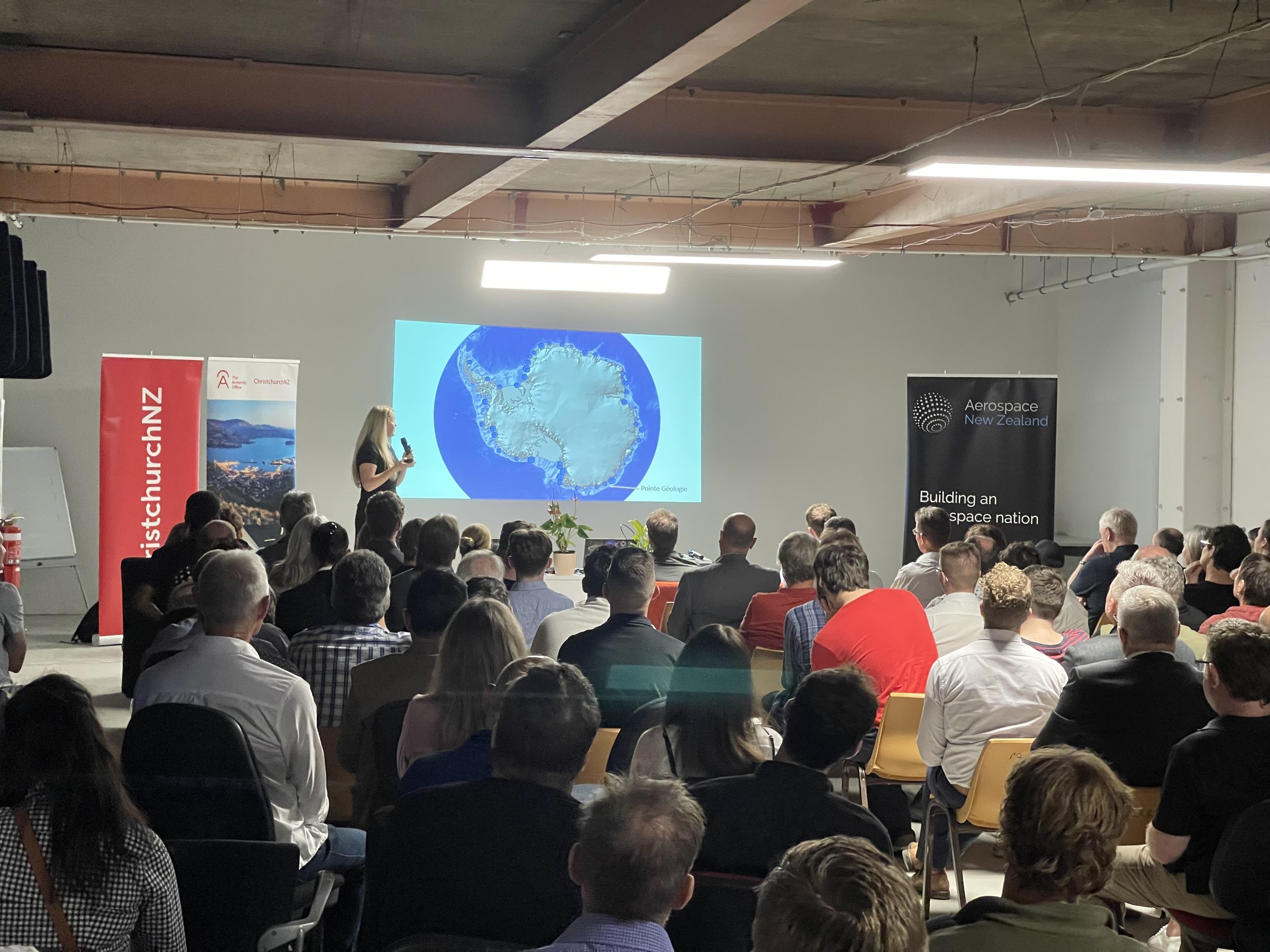Meet Up #33 - Aerospace in Antarctica
Aerospace New Zealand recently held their Meet-Up #33 - Aerospace in Antarctica event. With a massive turnout of both Canterbury Antarctic Network members and Aerospace New Zealand Associates, the event hosted a range of scientists and aerospace professionals presenting their latest projects and technologies being used in Antarctica. This event had a special focus on the practical applications of Aerospace in Antarctica and provided an insight to how both the Aerospace and Antarctic Communities can work together to solve problems in the harshest conditions on earth. The event also provided ample time to network and enjoy a beverage and some nibbles.
The event was held at 231 High Street, in Christchurch City, and hosted the following speakers.
Michelle La Rue - Associate Professor, University of Canterbury
Emperor penguin populations are challenging to monitor because of the species’ life history and remoteness. However, high-resolution satellite imagery has drastically advanced our ability to learn about the species, since we can see places on the ground that we cannot physically get to. In this presentation, Michelle will talk about a recent study where we estimated a comprehensive population trajectory over a recent 10-year period, finding with 81% probability that the global population of adult emperor penguins declined between 2009 and 2018 by about 9.6% (95% credible interval (CI) -26.4% to +9.4). We cannot explain this trend yet, especially as we observed an apparent population up-tick toward the end of time series. Our work potentially establishes a framework for monitoring other Antarctic coastal species detectable by satellite, while promoting a need for research to better understand factors driving biotic changes in the Southern Ocean ecosystem.Prof. Wolfgang Rack - Director, Gateway Antarctica - University of Canterbury
Aerospace solutions for solving a sea-ice mystery
How can we measure Antarctic sea-ice thickness over an area twice the size of Australia, when it is driven and crushed by hauling winds over the polar ocean? Thickness and size combined determine the total ice mass – but size we know, thickness we don’t. This matters, as mass controls the efficiency of world-wide deep ocean circulation. Urgent questions are asked about the climate impact of the recent dramatic decrease in sea ice area, quite likely not compensated by thickness growth. Wolfgang will showcase a strategy to unravel the Antarctic sea-ice mystery from air and space, which includes reference measurements on the icy ground. His team’s innovative radar solutions for drones and aircrafts - made in Aotearoa - form part of this strategy.Dr Daniel Price - Chief Scientist, Kea Aerospace
In 2017, for the first time since Edmund Hillary as part of the Commonwealth Trans-Antarctic Expedition in 1957, New Zealand needed to work out how to take a heavy vehicle traverse across Antarctica. To support world-leading climate science, the challenge was to work out how to get 1,000 km from one side of the Ross Ice Shelf to the other. In this presentation, Dan will tell the story of how the Siple Coast Traverse was achieved and how aerospace played a critical role in its success.Chris Martin - Lead Consultant, Vela Science
Planes, balloons, and tractor trains: Doing science while flying 38km above Antarctica
Doing science from Antarctica is as much about logistics as discovery. Come learn how ultra long duration balloons are launched, used, and recovered to make observations that couldn't be easily made anywhere else.
Overall, yet another highly successful Meet Up for both the Aerospace and Antarctic Communities.
Missed this event? Watch it on the associates exclusive recordings pages (access it from your Associates dashboard).
Not yet an associate? Join here.









